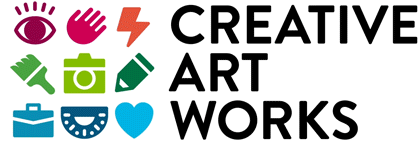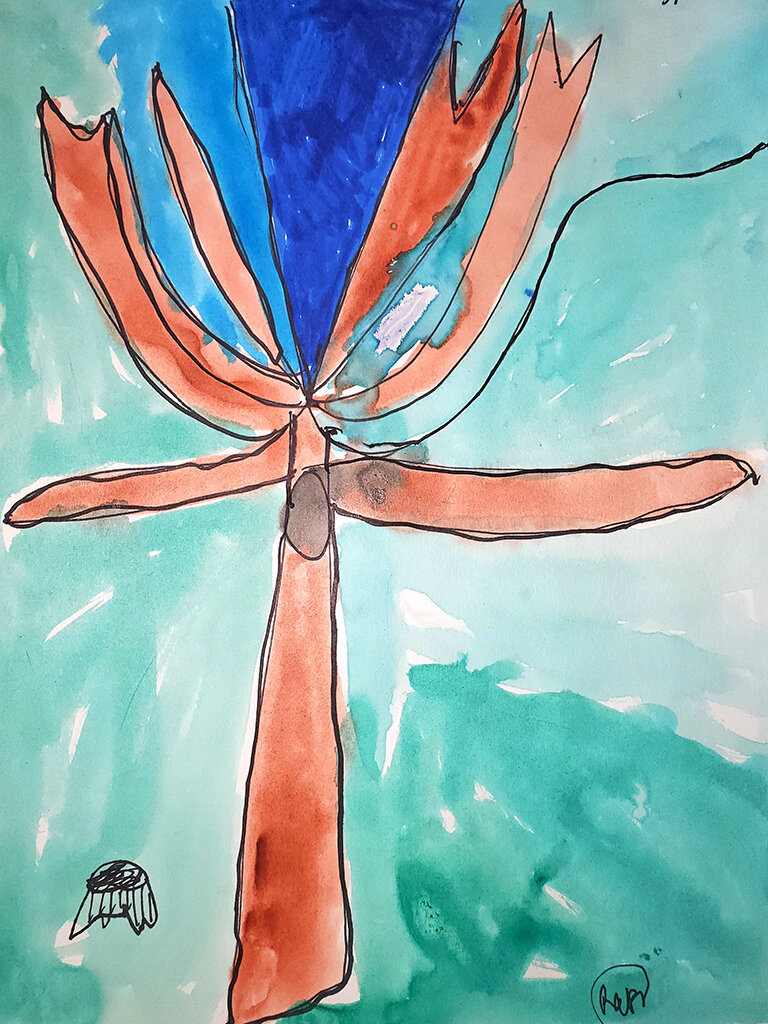Mapping the Hidden City at PS/MS 278
Shiloh’s neighborhood map combines many of the techniques learned in this after-school program
For a group of remote learners at PS/MS 278, virtual tours of NYC alleviated some of the monotony of being stuck at home during the pandemic and provided a sense of community and camaraderie. Mapping the Hidden City was a spring CASA* program that integrated the exploration of art techniques with the exploration of neighborhoods familiar and unfamiliar through online resources such as Google Maps and Google Images. Students also learned the basics of cartography, including map symbols, topographic lines, and aerial photography. In this issue of our blog, CAW Teaching Artist Brandi Yu plays tour guide and lets us tag along on some of the “field trips” that inspired her students.
Capturing the Texture of a Place
“Rubbings are a fun way to document a trip. During a Zoom meeting, I shared my screen and we used Google Street View to take a virtual walk in Washington Heights. I asked my students which directions I should go and we explored the neighborhood like tourists in a new city. Once, I stopped at public restroom and told everyone, ‘This is your last chance to use the restroom before we get home!’ and we all giggled.”
Working Wet-on-Wet
"Hands down the favorite technique for this group was the watercolor-with-regular-markers trick. It’s a good technique for travelers, because you don’t need to bring paint – just markers and a brush and find some water when you get there. You outline something with a water-based marker, and then you use water as a wash to spread it out."
Postcards from Places You’ve Never Been
“The idea of a tourist postcard is to capture the essence of a place in a very small format. For this virtual filed trip, we went to Gateway National Recreation Area, which includes Floyd Bennet Field, to take reference photos to inspire our postcards by taking screenshots of whatever caught our eye. Since Gateway is surrounded by water, students studied wet-on-wet watercolor techniques.”
Negative Space
“We spent some time really looking at trees and noticing some of the things that make them unique: Is the bark rough or smooth? Does the trunk go straight into the ground like a post or do the roots stick up like spider legs? We observed how overlapping tree branches create negative spaces, and you can define the shape of a tree by drawing those empty spaces.”
Draw a Map of Where You Are
“Not all kids familiar with how to use maps. So we started by mapping very small places and working our way out from there. Students began with a birdseye drawing of their desk, and then progressed to their room, and then their home or classroom or their school. From there, they branched out to their neighborhood. Finally, they created a fantasy island that had everything they wanted on it. Look for Macy’s, fast food restaurants, parks, movie theaters, and ice cream parlors.”
Filling in the Gaps
“I posted a “zentangle of the day” on Google Classroom for the students who said they wanted to meet every single day. We looked at topographical maps and we talked about which zentangles could represent geographical features – waves, grass, trees, or buildings. We drew sets of parallel lines and called these streets, and named those streets after people in our lives. We filled the spaces in between the blocks with graphical features and then we painted them.”
Lateral Thinking
“This little robot was inspired by a project in which we use artist drafting tape in a resist technique. We laid out roads or paths with tape and then painted over it. Once the paint dried enough, we peeled off the tape. Joy enjoyed the technique so much that she used the technique to make a little robot. I would say about a third of the students frequently used their art materials and the techniques they learned in class to make related or unrelated projects on their own time.”
A tape resist technique creates street patterns of regular dimensions…
This Creative Art Works program is supported, in part, by public funds from the New York City Department of Cultural Affairs and the *Cultural After-School Adventures (CASA) Initiative in partnership with The City Council and Council Member Ydanis Rodriguez.
…but it works equally well for this friendly little robot.














